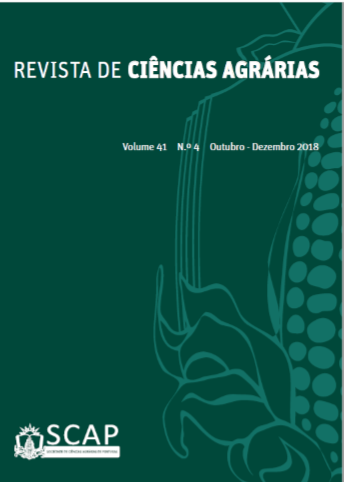Reaction of oat cultivars to blast in search of new sources of genetic resistance
DOI:
https://doi.org/10.19084/RCA18162Abstract
The objective of this work was to evaluate eleven oat (Avena spp.) cultivars for the reaction to the blast caused by the fungus Pyricularia oryzae Cav., under controlled conditions, to identify promising cultivars for use in genetic breeding programs. Five cultivars of Avena sativa, four of A. strigosa and two of A. brevis were tested. The reaction was observed in leaves, with four isolates of P. oryzae, in the concentration of 2 x 105 conidia/ml. It was quantified the number and expansion of lesions, severity and area under the curve of disease progression. The cultivars presented variability regarding the reaction to inoculation. The best performance was A. sativa 'URS Taura', which showed the lowest values for number of lesions (2/leaf), length (5.42 mm) and width (1.25 mm) of lesions, area under the curve of disease progression (0.65) and severity (6%). No genotype was resistant, but four cultivars showed severity percentages compatible with 'Moderately resistance': A. sativa 'URS Taura' (6%), 'UPFA Ouro' (14%) and 'IPR Afrodite' and A. brevis 'BRS Madrugada' (24%). These genotypes are references for use as parents in oat breeding programs.


